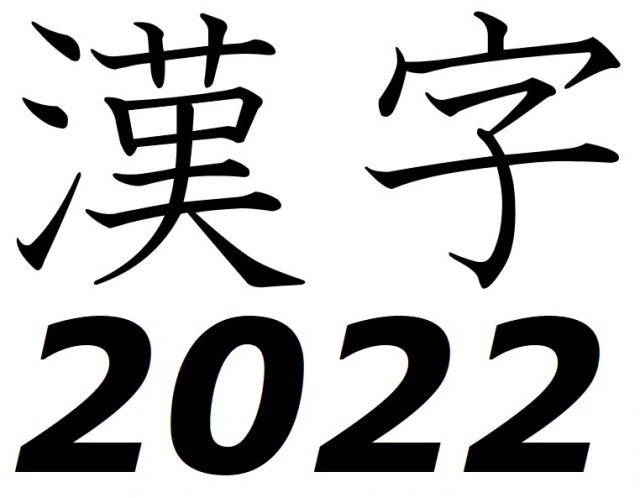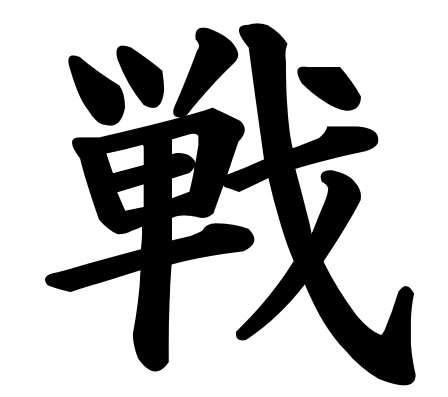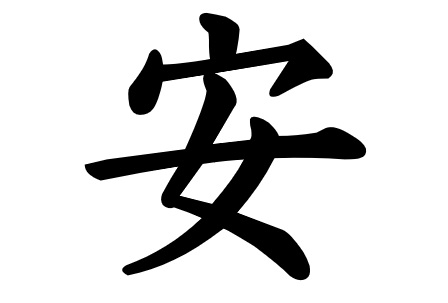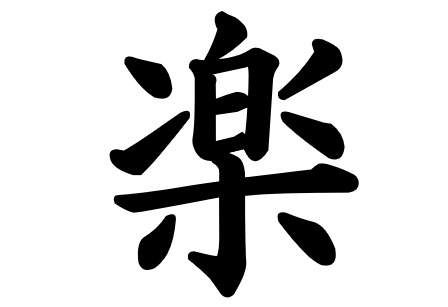
Single character with multiple meanings chosen as the kanji that best sums up 2022.
Every year, the Japan Kanji Proficiency Test Association collects votes to decide the Kanji of the Year. Choosing just one Japanese-language character to represent the events and emotions of the last 12 months is no easy task, but a single kanji can convey multiple meanings, and that’s very much the case for the Kanji of the Year for 2022, which is…
2022年 #今年の漢字 「戦」
— 【公式】2023年「今年の漢字」 (@Kotoshinokanji) December 12, 2022
森清範貫主による揮毫の瞬間はこちら🤩 pic.twitter.com/tvDAy5gYmu
…sen.
Alternatively read as ikusa, sen carries the meaning of “fight,” “battle,” or “war.” It’s the first kanji in sensou (戦争), the most common Japanese word for “war,” and that connotation was a major factor among voters who chose sen as a representation of acts of military aggression by Japan’s Pacific neighbors in 2022 in the form of Russia’s invasion of Ukraine and missile launches by North Korea.
戦 is also part of the words tatakau (戦う) and tatakai (戦い), the verb and noun forms of “fight.” Like the English “fight,” tatakau can also be used to describe a non-physical struggle, and others who voted for 戦 saw the kanji as a symbol of Japanese people’s fighting to maintain their standard of living during a period of rising prices and a weakened yen. In a more positive light, 戦 also won votes from those who chose it in commemoration of efforts by Japanese sports stars such as the nation’s World Cup soccer team and athletes who competed at the Beijing Winter Olympics, as well as the accomplishments of baseball players such as Shohei Ohtani’s sustained success in Major League Baseball and Aki Sasaki becoming the youngest perfect game-pitcher in Japanese professional baseball history.
Out of the 223,768 votes collected, 戦 received 10,804. Behind it was…
…an, or yasu (10,616 votes). Depending on context, 安 can mean either “secure” or “cheap,” relating to a feeling of relief as Japan puts the worst phases of the pandemic behind it and the yen plummeting in value versus foreign currencies.
Third place went to the kanji raku (7,999 votes), which can mean “easy,” “relaxed,” or, like when it shows up in the word tanoshii (楽しい), “fun.” As with the positive sense of 安, votes for 楽 came from the relaxation of coronavirus protocols and steps towards returning to more enjoyable and free lifestyles.
2022年「#今年の漢字」第1位は「戦」でした
— 【公式】2023年「今年の漢字」 (@Kotoshinokanji) December 12, 2022
応募総数223,768票から10,804票(4.83%)を集めての第1位でした。
多数のご応募ありがとうございました
2位以下の情報は追ってお知らせいたします!https://t.co/tux2uCxio9#漢字の日#戦 pic.twitter.com/2dkfpQPm1f
In keeping with tradition, the Kanji of the Year was revealed via the large-scale calligraphy of Seihan Mori, abbot of Kiyomizudera, which will be on display at the Kyoto temple until December 21, and then at the city’s Kanji Museum from December 22.
Source: Japan Kanji Proficiency Test Association
Images ©SoraNews24
● Want to hear about SoraNews24’s latest articles as soon as they’re published? Follow us on Facebook and Twitter!




 Japan announces Kanji of the Year for 2019, and it was really the only logical choice
Japan announces Kanji of the Year for 2019, and it was really the only logical choice Japan’s kanji character of the year for 2017 is “north”
Japan’s kanji character of the year for 2017 is “north” “Disaster”: 2018 Kanji of the Year unveiled by Buddhist monk at Kiyomizudera temple in Kyoto
“Disaster”: 2018 Kanji of the Year unveiled by Buddhist monk at Kiyomizudera temple in Kyoto “Gold” named 2016 Kanji of the Year
“Gold” named 2016 Kanji of the Year “Safety” voted Japan’s official kanji of 2015
“Safety” voted Japan’s official kanji of 2015 How to order snacks on a Shinkansen bullet train in Japan
How to order snacks on a Shinkansen bullet train in Japan Hello, cosmetics! Clinique teams up with Hello Kitty this summer for first-time collaboration
Hello, cosmetics! Clinique teams up with Hello Kitty this summer for first-time collaboration Burger King Japan suddenly adds Dr. Pepper and Dr. Pepper floats to its menu nationwide
Burger King Japan suddenly adds Dr. Pepper and Dr. Pepper floats to its menu nationwide Demon Slayer: Kimetsu no Yaiba gets new roller coaster attractions and food at Universal Studios Japan
Demon Slayer: Kimetsu no Yaiba gets new roller coaster attractions and food at Universal Studios Japan New samurai glasses are Japan’s latest weird must-have souvenir
New samurai glasses are Japan’s latest weird must-have souvenir New Nintendo Lego kit is a beautiful piece of moving pixel art of Mario and Yoshi【Photos】
New Nintendo Lego kit is a beautiful piece of moving pixel art of Mario and Yoshi【Photos】 Nintendo history you can feel – Super NES, N64, and GameCube controllers become capsule toys
Nintendo history you can feel – Super NES, N64, and GameCube controllers become capsule toys Japan’s new difficult-to-drink-from beer glass protects your liver, but it’s a brutal experience
Japan’s new difficult-to-drink-from beer glass protects your liver, but it’s a brutal experience 10 things you should buy at 7-Eleven in Japan
10 things you should buy at 7-Eleven in Japan McDonald’s adds new watermelon frappe and fruity macaron to its menu in Japan
McDonald’s adds new watermelon frappe and fruity macaron to its menu in Japan “The most Delicious Cup Noodle in history” – Japan’s French Cup Noodle wins our heart【Taste test】
“The most Delicious Cup Noodle in history” – Japan’s French Cup Noodle wins our heart【Taste test】 Starbucks releases a cute Frappuccino and Unicorn Cake…but not in Japan
Starbucks releases a cute Frappuccino and Unicorn Cake…but not in Japan Kyoto Tower mascot termination reveals dark side behind cute Japanese characters
Kyoto Tower mascot termination reveals dark side behind cute Japanese characters McDonald’s Japan’s Soft Twist Tower: A phantom ice cream only sold at select branches
McDonald’s Japan’s Soft Twist Tower: A phantom ice cream only sold at select branches Yabai Ramen: What makes this Japanese ramen so dangerous?
Yabai Ramen: What makes this Japanese ramen so dangerous? Finally! Nintendo Japan expands Switch 8-bit controller sales to everybody, Online member or not
Finally! Nintendo Japan expands Switch 8-bit controller sales to everybody, Online member or not Japanese government wants to build luxury resorts in all national parks for foreign tourists
Japanese government wants to build luxury resorts in all national parks for foreign tourists To combat declining birth rate, Japan to begin offering “Breeding Visas” to foreigners
To combat declining birth rate, Japan to begin offering “Breeding Visas” to foreigners Studio Ghibli releases anime heroine cosplay dresses that are super comfy to wear
Studio Ghibli releases anime heroine cosplay dresses that are super comfy to wear Woman charged for driving suitcase without a license in Osaka
Woman charged for driving suitcase without a license in Osaka Studio Ghibli unveils My Neighbour Totoro miniature house model
Studio Ghibli unveils My Neighbour Totoro miniature house model Kyoto experiencing problems with foreign tourists not paying for bus fares, but not on purpose
Kyoto experiencing problems with foreign tourists not paying for bus fares, but not on purpose Fighting mild hunger with a Japanese soda that turns into jelly in the stomach【Taste test】
Fighting mild hunger with a Japanese soda that turns into jelly in the stomach【Taste test】 Studio Ghibli’s Howl’s Moving Castle tapestry unveiled in Japan for first time
Studio Ghibli’s Howl’s Moving Castle tapestry unveiled in Japan for first time McDonald’s new Happy Meals offer up cute and practical Sanrio lifestyle goods
McDonald’s new Happy Meals offer up cute and practical Sanrio lifestyle goods Sales of Japan’s most convenient train ticket/shopping payment cards suspended indefinitely
Sales of Japan’s most convenient train ticket/shopping payment cards suspended indefinitely Sold-out Studio Ghibli desktop humidifiers are back so Totoro can help you through the dry season
Sold-out Studio Ghibli desktop humidifiers are back so Totoro can help you through the dry season Japanese government to make first change to romanization spelling rules since the 1950s
Japanese government to make first change to romanization spelling rules since the 1950s Foreigner’s request for help in Tokyo makes us sad for the state of society
Foreigner’s request for help in Tokyo makes us sad for the state of society Ghibli founders Toshio Suzuki and Hayao Miyazaki contribute to Japanese whisky Totoro label design
Ghibli founders Toshio Suzuki and Hayao Miyazaki contribute to Japanese whisky Totoro label design Doraemon found buried at sea as scene from 1993 anime becomes real life【Photos】
Doraemon found buried at sea as scene from 1993 anime becomes real life【Photos】 Tokyo’s most famous Starbucks is closed
Tokyo’s most famous Starbucks is closed Princesses, fruits, and blacksmiths: Study reveals the 30 most unusual family names in Japan
Princesses, fruits, and blacksmiths: Study reveals the 30 most unusual family names in Japan Renowned Japanese calligraphy teacher ranks the top 10 kanji that foreigners like
Renowned Japanese calligraphy teacher ranks the top 10 kanji that foreigners like U.S. college student learns the hard way to get your Japanese kanji tattoo checked by an expert
U.S. college student learns the hard way to get your Japanese kanji tattoo checked by an expert Japanese study tip: Imagine kanji characters as fighting game characters, like in this cool video
Japanese study tip: Imagine kanji characters as fighting game characters, like in this cool video Kanji fail — Japanese parents shocked to learn their baby girl’s name has inappropriate meaning
Kanji fail — Japanese parents shocked to learn their baby girl’s name has inappropriate meaning Foreigners in Japan vote for the best-looking katakana character
Foreigners in Japan vote for the best-looking katakana character Foreigners misreading Japanese kanji of “two men one woman” is too pure for Japanese Internet
Foreigners misreading Japanese kanji of “two men one woman” is too pure for Japanese Internet Four new era names the Japanese government rejected before deciding on Reiwa
Four new era names the Japanese government rejected before deciding on Reiwa Struggling with Japanese? Let Tako lend you a hand…or five
Struggling with Japanese? Let Tako lend you a hand…or five The 10 most attractive Japanese women’s names, as chosen by dating app users
The 10 most attractive Japanese women’s names, as chosen by dating app users W.T.F. Japan: Top 5 most difficult kanji ever【Weird Top Five】
W.T.F. Japan: Top 5 most difficult kanji ever【Weird Top Five】 Twitter users say Japanese Prime Minister’s name is hiding in the kanji for Japan’s new era name
Twitter users say Japanese Prime Minister’s name is hiding in the kanji for Japan’s new era name Kanji Tetris is the coolest way to practice and play with Japanese that we’ve ever seen【Video】
Kanji Tetris is the coolest way to practice and play with Japanese that we’ve ever seen【Video】 The Star Wars folding screens just unveiled at Kyoto’s Kiyomizu Temple are amazing
The Star Wars folding screens just unveiled at Kyoto’s Kiyomizu Temple are amazing Tired of wasting paper practicing your kanji? Try these reusable water-activated practice sheets
Tired of wasting paper practicing your kanji? Try these reusable water-activated practice sheets
Leave a Reply